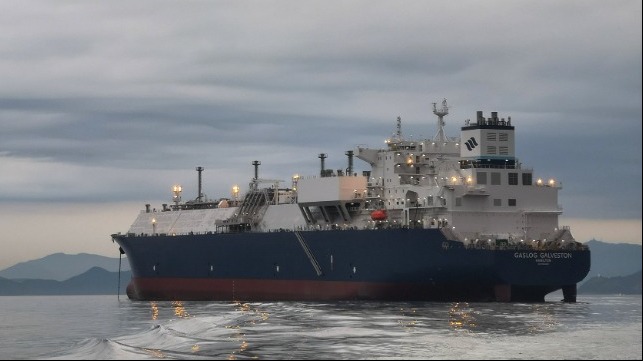Academic-Led Study Seeks to Quantify Methane Slip

One of the most widely discussed issues in the use of LNG as a marine fuel is emissions of the unburned gas known in the industry as methane slip. While LNG is an effective alternative to reduce carbon dioxide, nitrous oxide and sulfur emissions, it also releases methane into the atmosphere. A new academic-led study is underway which the organizers say is the first time methane emissions were measured from an operating vessel and the results, when released later this year, will provide data-driven insights into the greenhouse gas (GHG) profile of LNG carriers to identify opportunities for environmental performance improvement.
“This project comes at a critical time, with policymakers seeking to understand both how to regulate industry and ensure that climate targets are met,” said Dr. Paul Balcombe, Lecturer in Chemical Engineering and Renewable Energy at Queen Mary University and the lead researcher for the study. “Accomplishing this will depend on ensuring transparent, emissions-related data is available and lessons learned from studies such as this are implemented.”
Industry trade groups have said that reports of methane slip are being greatly exaggerated in the environmental debate and that the shipping industry along with motor manufacturers and others are making good progress in addressing the issue. They also argue with the measurements and criteria used in some studies. Environmentalists, however, recognize that while LNG can lower CO2 emissions by a quarter as well as reducing NOx, SOx, and particulate emissions, they highlight the more potent nature of methane as a greenhouse gas.
The European Commission said after a 2016 study that methane emissions from LNG-powered ships were higher than current marine fuel oils. They cited data saying that the emissions increased dramatically at lower loads. “In order to retain the climate benefits of LNG, it is important to address methane emissions, the EC said calling for more advancement in the designs. Last fall, an NGO, the International Council on Clean Transportation (ICCT), however, went further in a report saying there is “no climate benefit from using LNG.”
Many within the shipping industry took exception to the NGO’s report citing parts of its data and how the measurements were taken. Matteo Natali, General Manager of Business Intelligence at Wärtsilä, for example, said, “the methane emission levels used in the study do not reflect the latest gas engine technology. Moreover, methane’s impact is calculated based on a 20-year timeframe, whereas most scientific studies have adopted a 100-year view, as does all relevant legislation.”
The new study that seeks to provide more definitive data is being prepared by Queen Mary University London, with support from the Collaboratory to Advance Methane Science (CAMS) and Enagas. The data for the study was collected aboard the Cheniere-chartered newbuild GasLog Galveston during a round-trip voyage from Cheniere’s Corpus Christi liquefaction facility to a discharge port in Europe. Data gathered during the voyage included measurements of engine exhaust as well as fugitive emissions.
“We are proud to be a part of the CAMS effort to measure and monitor methane emissions from the GasLog Galveston under real-world operating conditions,” said Paolo Enoizi, Chief Operating Officer of GasLog. “We view the efforts undertaken by the CAMS as critical to minimizing the environmental footprint of the global LNG shipping fleet and supporting the continued success and competitiveness of the LNG industry.”
The data were collected aboard the newly built Gaslog Galveston LNG carrier that was delivered to Gaslog by Samsung Heavy Industries' Geoje shipyard at the beginning of 2021. Registered in Bermuda, the 88,136-dwt vessel has a capacity of 174,000m³. The newbuild features GTT’s Mark III Flex Plus containment system and WinGD’s low-pressure two-stroke propulsion. It is one of six sister ships the company has introduced since 2018, along with six larger gas carriers.
“Enagás is intensively working in the detection and quantification of methane within its assets to minimize emissions,” said Claudio Rodríguez, Gas Assets General Manager at Enagás. “We believe improving the accuracy of the emissions data along the gas value chain is critical, and this first-of-its-kind study will shed light on methane emissions associated with the logistic supply chain – informing us of our greatest prospects for development.”
The Collaboratory to Advance Methane Science (CAMS) is a research collaboration on methane science, which includes Cheniere, Chevron, Equinor, ExxonMobil, Pioneer Natural Resources, Sempra LNG, and Shell among its members.
The results of the study are expected to be released in a peer-reviewed journal.
